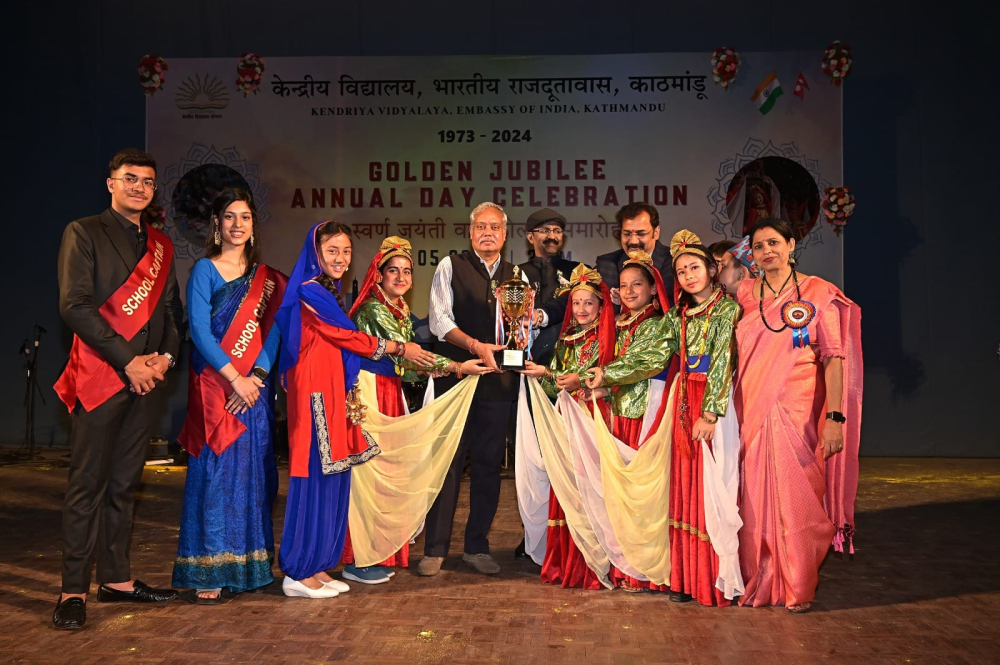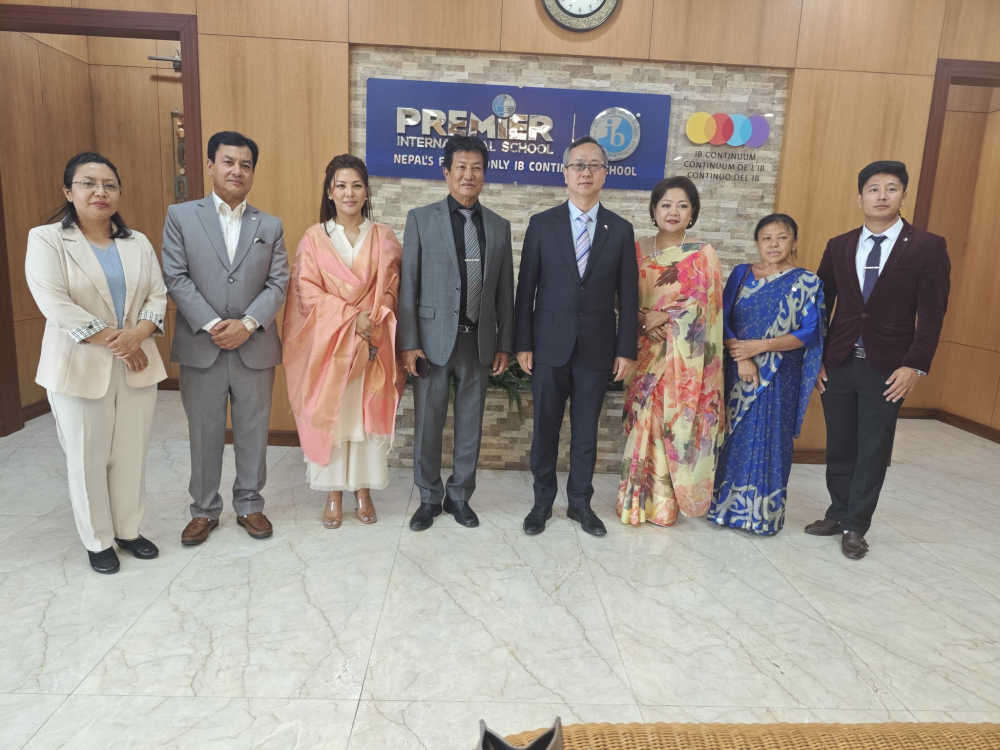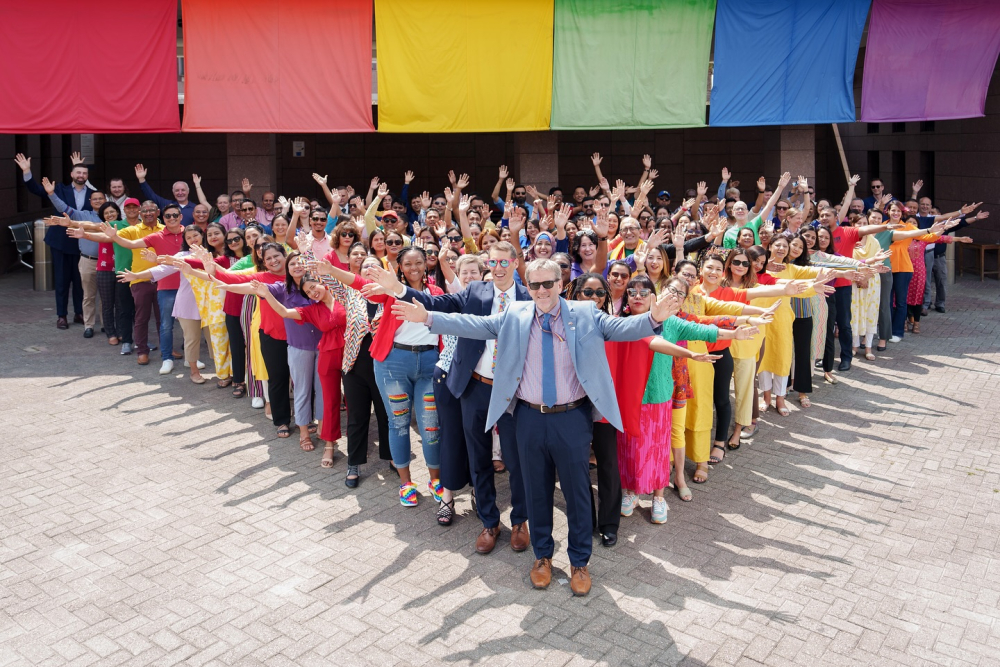Foreign ambassadors extending diplomacy to the people

We use Google Cloud Translation Services. Google requires we provide the following disclaimer relating to use of this service:
This service may contain translations powered by Google. Google disclaims all warranties related to the translations, expressed or implied, including any warranties of accuracy, reliability, and any implied warranties of merchantability, fitness for a particular purpose, and noninfringement.

Highlights
- In Nepal, the embassies of more than 25 countries, including India, China and America, are active in expanding their relations not only at the government level but also at the public level, for that they are promoting 'public diplomacy' through social networks.



China's Vice Foreign Minister Sun Weidong paid a two-day visit to Nepal on June 11 and 12. He came to Nepal for the 16th round of China-Nepal diplomatic consultation. On that occasion, Deputy Foreign Minister Weidong, who held a bilateral diplomatic consultation meeting with Foreign Secretary Seva Lamsal, had a courtesy meeting with President Ramchandra Paudel, then Prime Minister Pushpa Kamal Dahal and then Deputy Prime Minister and Foreign Minister Narayankaji Shrestha.

On June 14, Chinese Ambassador to Nepal Chhan Song gave detailed information about the meeting and talks in Nepali language on his social network X (Twitter). It is the first time that the Chinese ambassador in Nepal has publicly informed about the meeting in Nepali language.
Zehra Naqvi, the spokesperson of the American Embassy in Nepal, has been informing about the activities of her embassy every month on the social network Facebook for the past few months. Although he is an American diplomat, Naqvi, who can understand and speak the Nepali language well, often comes through the embassy's social network. Which can be seen by users watching and commenting on it. On the other hand, Dean R. Thompson, the American ambassador in Nepal, is informing about every activity of the embassy through his Twitter (X) handle.
The Indian ambassador or spokesperson in Nepal does not have a Twitter handle. But the embassy uses the handle 'India in Nepal' on both Facebook and Twitter. The same 'India in Nepal' has been given information about the various activities undertaken with the support and initiative of the Indian Embassy, as well as bilateral meetings and relations. Lately, the Indian Prime Minister Narendra Modi, Foreign Minister S. Jaishankar and other high-level meetings and conversations have started tweeting in Nepali language on this handle. Which is what the Chinese embassy has started doing now. Rob Fenn is currently the British Ambassador to Nepal. Rather than in his own language, he likes to "speak a little Nepali". The scene of him traveling to different places in Nepal can be seen on the British Embassy's Twitter handle 'UK in Nepal'.
• • •
Looking at the recent activities of the four foreign embassies in Nepal mentioned above on social networks, it is clear that they want to expand their relations not only at the government level but also at the public level in Nepal. They are trying to reach Nepali people directly. Not only those four, more than 25 embassies in Nepal are expanding their activities to public diplomacy to expand their relations to the public level.

Public diplomacy is inherent and leverages domestic and foreign public spheres. “Democratic values and norms demand more open activities and practices in public diplomacy. The practice of public diplomacy is more practical as more and more foreign people are met through direct involvement in the country's democratic environment,' states the research document titled 'Effective Use of Public Diplomacy in Nepal's Perspective' published by Policy Research Foundation. The document was prepared in 2022 based on the research done by former ambassador Khaganath Adhikari and assistant professor of library and information science center under Tribhuvan University.
'The main tools used in public diplomacy are information, education and culture. And, its target audience is the general public, journalists, government officials, academics, think-tanks, NGO workers, business leaders and art societies, including the foreign public,” the research added. According to research, public diplomacy generally involves explaining and advocating government policies abroad in a credible and meaningful way, providing information about countries, people, values, and institutions, building lasting relationships and mutual understanding through the exchange of people and ideas, and influencing foreign attitudes and their implications for the home country's policies. Advises decision makers.
Former Foreign Secretary Madhurman Acharya says that public diplomacy is about changing the opinion of common people in foreign countries in favor of their country. It is to form an opinion in your favor about the government level, private sector, think tanks etc. All countries do this. I also heard that we are about to open a public diplomacy division. Even though we understand about public diplomacy, we have not worked effectively according to it,'' said Acharya, who is also a former ambassador. The opinion about Nepal is not good. That notion does not allow policy making in favor of Nepal. The Indian media is commenting that they are advocating for China even though it is our neighbor. That is, this happened without Nepal making our opinion in public diplomacy.'
Acharya believes that America is also using public diplomacy strongly in Nepal. "Once the ambassador tried to hold a program with the people. Nepal also has a culture and ancient relationship with India. This public diplomacy can be done according to the Vienna Convention. But its limitation is to create an environment to strengthen bilateral relations without interfering in internal affairs. Foreigners do it hard. Nepal has just started," he said. The term

public diplomacy was first used on January 15, 1856 by The Times of London. Criticizing the activities of US President Franklin Pierce's visit to Britain, the magazine wrote, "American politicians should remember that if they want to have influence over us, they must also set an example for their own people." The use of public diplomacy was initially practiced by developed countries. Which is especially the United States' public diplomacy after the end of the Second World War. At one time, public diplomacy was also used as propaganda. But later, in a new environment, it has been started as public diplomacy. Also, public diplomacy is considered as 'soft power'. Public diplomacy and soft power go hand in hand, they complement each other.
Nepal's foreign policy-2077 has also given importance to public diplomacy. Public diplomacy is subsumed under foreign policy. "Promoting the country's image and specific identity as a soft power through public diplomacy, gaining the support, cooperation and goodwill of the international world," the policy states, "In all aspects of public diplomacy, using information technology including social media to the maximum extent, through digital diplomacy, real and factual information and information in the international world. To promote a positive perception towards Nepal by conveying the message.'
While Nepal is mentioning that it will move forward through digital diplomacy by making maximum use of information technology including social media in public diplomacy, the embassies of foreign countries in Nepal are adopting the same style. But Nepal is weak in this. There are currently more than two dozen foreign embassies in Nepal. These embassies have been using social media more recently to emphasize public diplomacy. Nepal's two neighbors, India and China, and the United States and the European Union and the United Kingdom seem to be more active in public diplomacy through social media. They are constantly posting on social media focusing on Nepal, Nepali language, culture, traditions, food, costumes, various tourist spots, various meetings etc.

The US embassy appears to be at the forefront of public diplomacy through social media. The American Embassy's Twitter handle has 449,000 followers, while its Facebook page has 403,000 followers. Also, the ambassador himself runs Twitter, which has 263,000 followers. After the US, the Indian Embassy has the largest number of X handles on social media and India in Nepal on Facebook. In which there are 88,800 floors on X and 217,000 floors on Facebook.
Former Chinese Ambassador to Nepal Hou Yanchi opened the Ax Handle. Now, 73,200 people are following the handle run by Ambassador Chan Song. Also, the name of the spokesperson of the Chinese Embassy also has an X handle. Another most followed is the Ax handle, of the British Embassy. Its floor is 43 thousand. Also, Ambassador Rob Fenn has his own Ax Handle. The European Union is also active in X. It has 19,900 floors. Also, the ambassador runs his own separate X.
Former ambassador and professor Vijayakanth Karna says that due to growing geopolitical competition, countries with large and strong economies have started investing more in public diplomacy. He says, "China has been exchanging visits in Nepal for the last time, collaborating with political parties and other organizations and doing various other collaborations at the government level. That means China has widened the scope of its public diplomacy in Nepal. The focus of the US and India is not to let their activities decrease in the face of China's increased public diplomacy. After Xi Jinping became the President of China in 2013, they started investing more in public diplomacy and it has had an impact in Nepal as well. Karn says.
In 1998, PH Stim said about public diplomacy, 'Now public diplomacy is also called the third dimension of diplomacy. The first is bilateral diplomacy and the second is multilateral diplomacy. Public diplomacy is understanding, informing and influencing foreign people. In recent years, public diplomacy has become widespread, popular and an effective diplomatic tool for some countries. Although developed and large countries use public diplomacy as a tool for political purposes, underdeveloped countries like Nepal have not been able to use it fully. Currently, Nepal has embassies in 33 countries and three United Nations missions. In addition, there are 7 Consulate Generals. But these missions seem too challenging to advance public diplomacy. Because in order to make public diplomacy effective, the financial side needs to be strong as well as adequate human resources. Which does not seem possible for Nepal immediately.
 प्रकाशित : श्रावण ५, २०८१ ०७:२४
प्रकाशित : श्रावण ५, २०८१ ०७:२४

 २२.१२°C काठमाडौं
२२.१२°C काठमाडौं











